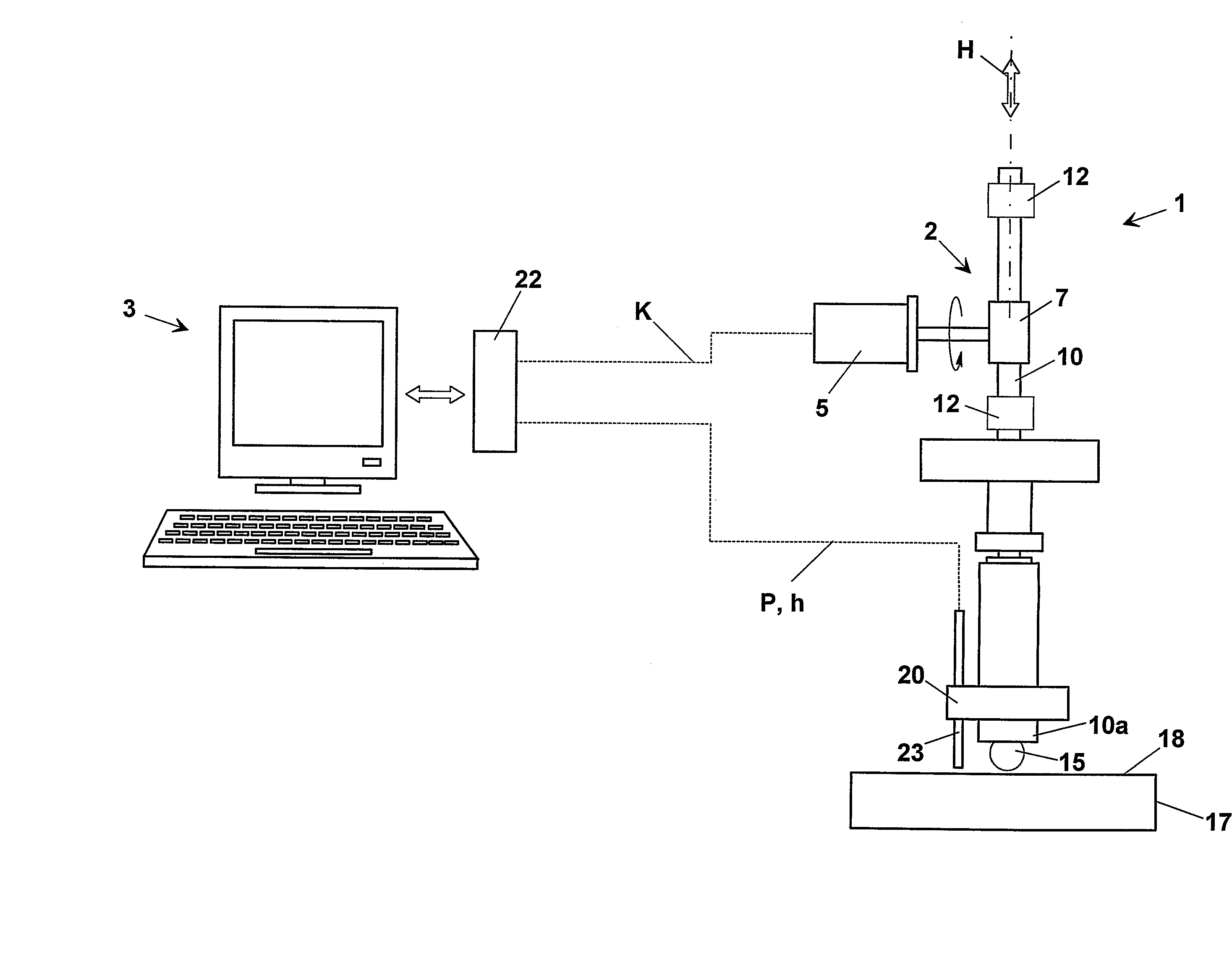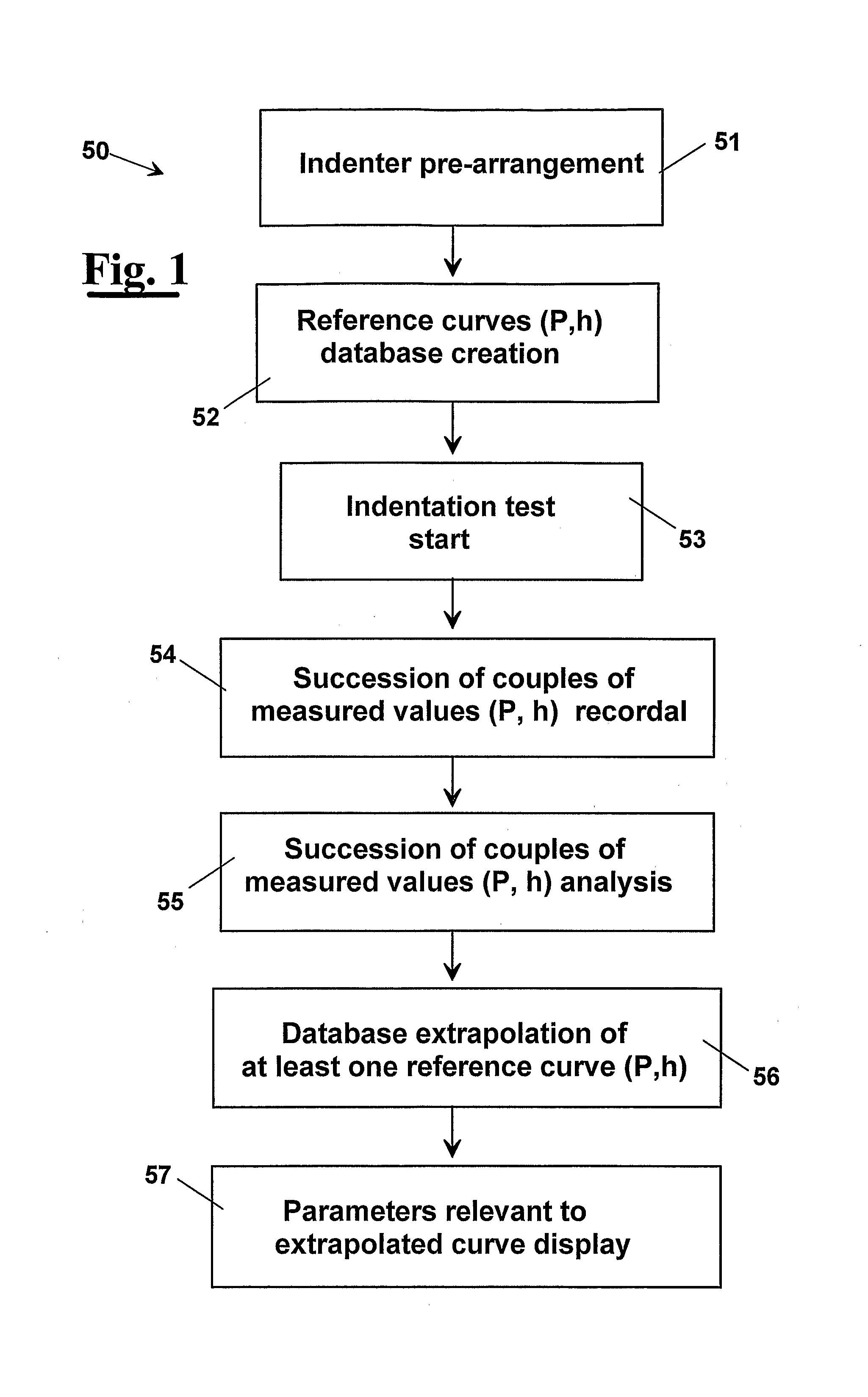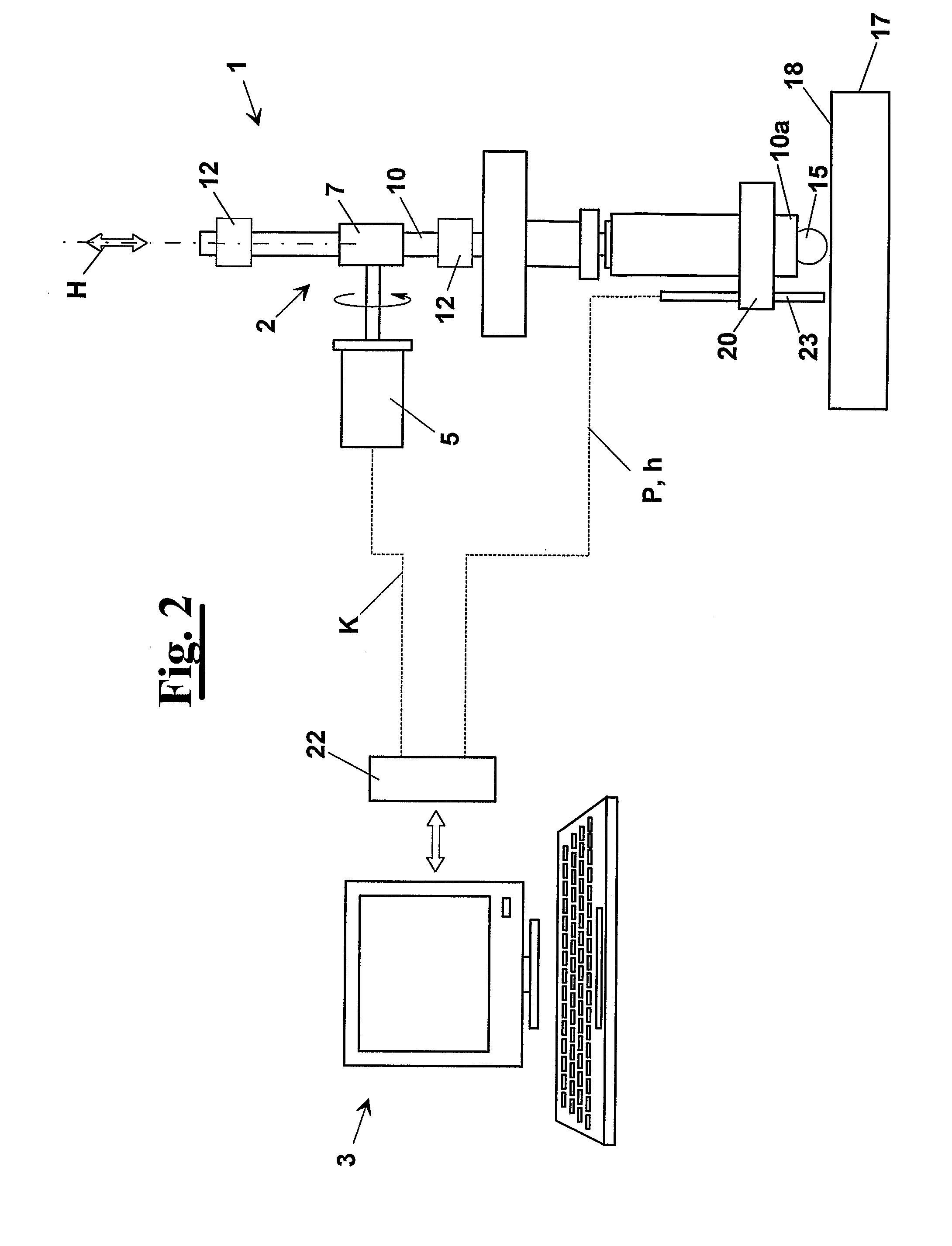Method For Detecting Mechanical Features Of A Material And Apparatus That Carries Out This Method
a technology of mechanical features and methods, applied in the field of metal materials, can solve the problems of insufficient material definition, destructive test and inadequacy, and manual procedure, and achieve the effect of non-destructive test, easy and cheap
- Summary
- Abstract
- Description
- Claims
- Application Information
AI Technical Summary
Benefits of technology
Problems solved by technology
Method used
Image
Examples
Embodiment Construction
[0054] With reference to the block diagram 50 shown in FIG. 1, an exemplary method for detecting mechanical features of a material, in particular a metal material, according to the invention, comprises the steps described hereafter. The process for determining the mechanical features of the sample provides a preliminary step where a database is built containing a finite number of reference curves (P,h), block 52. Each of such curves is obtained using a finite elements analysis, well known to a skilled person and then not described in more detail, and reproducing the trend of the applied force (P) responsive to the penetration depth (h) during an indentation test. The reference curves (P,h) are obtained for a determined number of different materials having a known E elastic modulus, and having yield stress (σsn) and strain-hardening coefficient (n) comprised within determined ranges.
[0055] The tested sample is then arranged at an indenter apparatus, for example a ball indenter, bloc...
PUM
 Login to View More
Login to View More Abstract
Description
Claims
Application Information
 Login to View More
Login to View More - R&D
- Intellectual Property
- Life Sciences
- Materials
- Tech Scout
- Unparalleled Data Quality
- Higher Quality Content
- 60% Fewer Hallucinations
Browse by: Latest US Patents, China's latest patents, Technical Efficacy Thesaurus, Application Domain, Technology Topic, Popular Technical Reports.
© 2025 PatSnap. All rights reserved.Legal|Privacy policy|Modern Slavery Act Transparency Statement|Sitemap|About US| Contact US: help@patsnap.com



